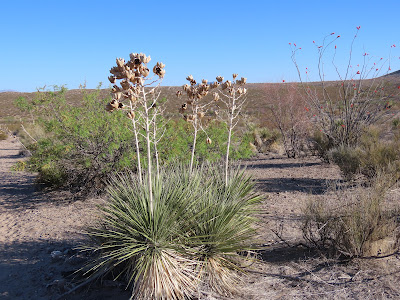
At about 10:20 last night, when I let Research Associate Becca out into the backyard to relieve herself, I saw this nocturnal beauty by one of Dr. K's flower pots. Fortunately, Becca didn't see it or else she would have been poking her nosey nose right into the unsuspecting critter. I was able to get Becca back inside and grab my camera for a rare nighttime portrait.

This second tarantula I photographed in Soledad Canyon last year. Notice the difference in color between the two arachnids. Both were fairly large individuals, their bodies between 3 and 4 inches long.
















































